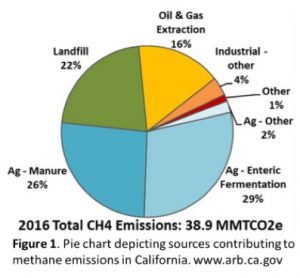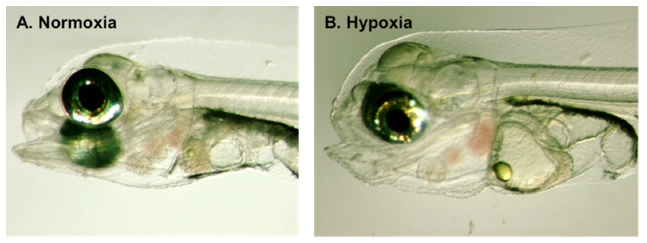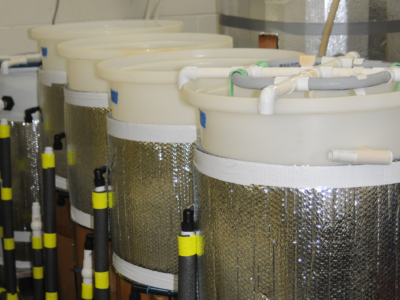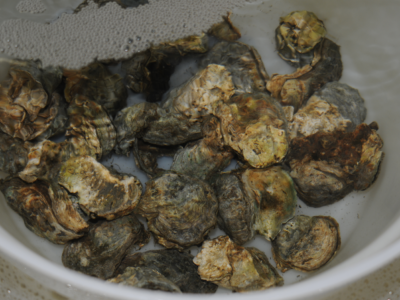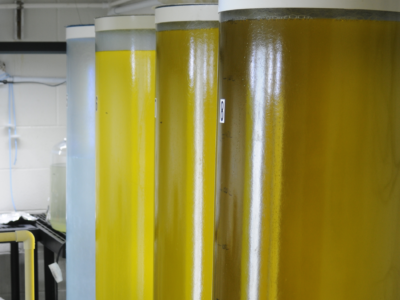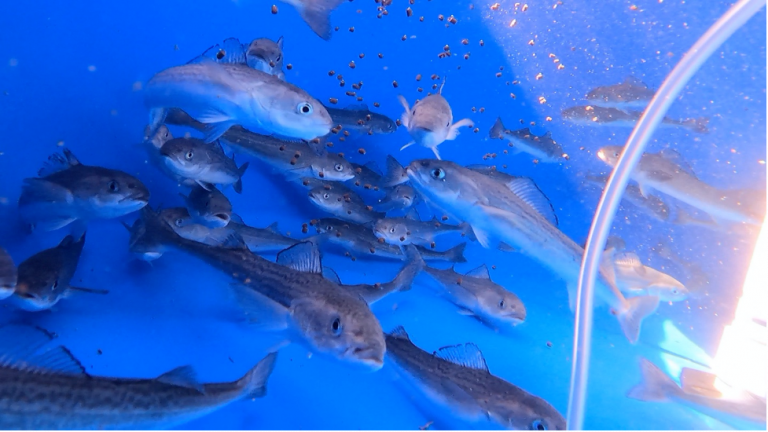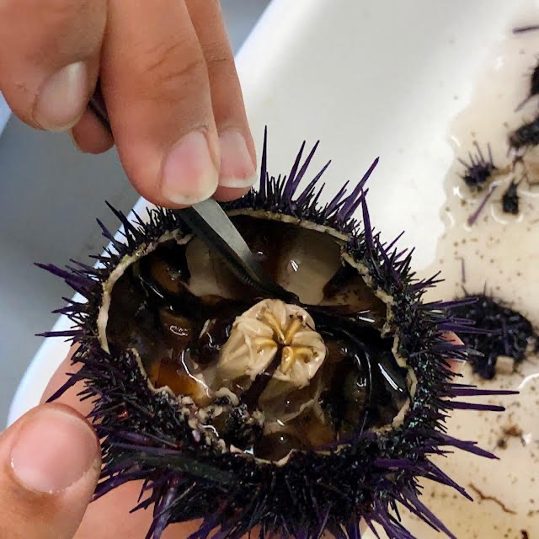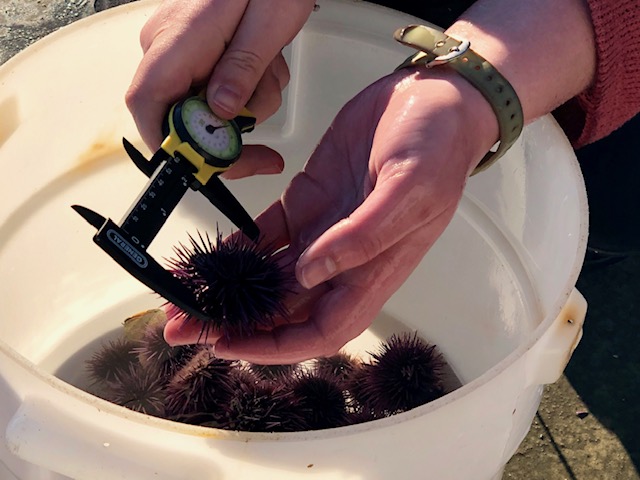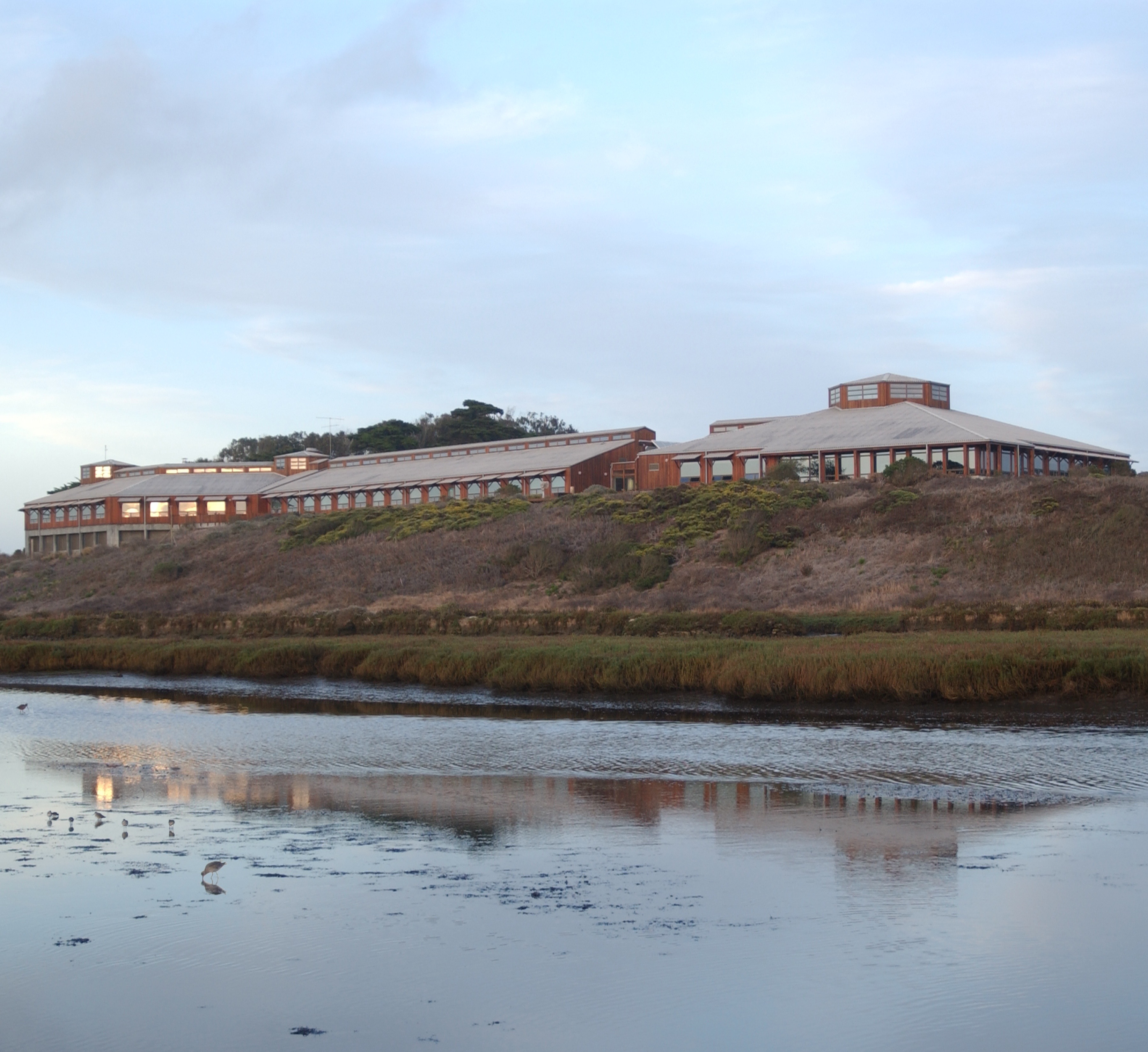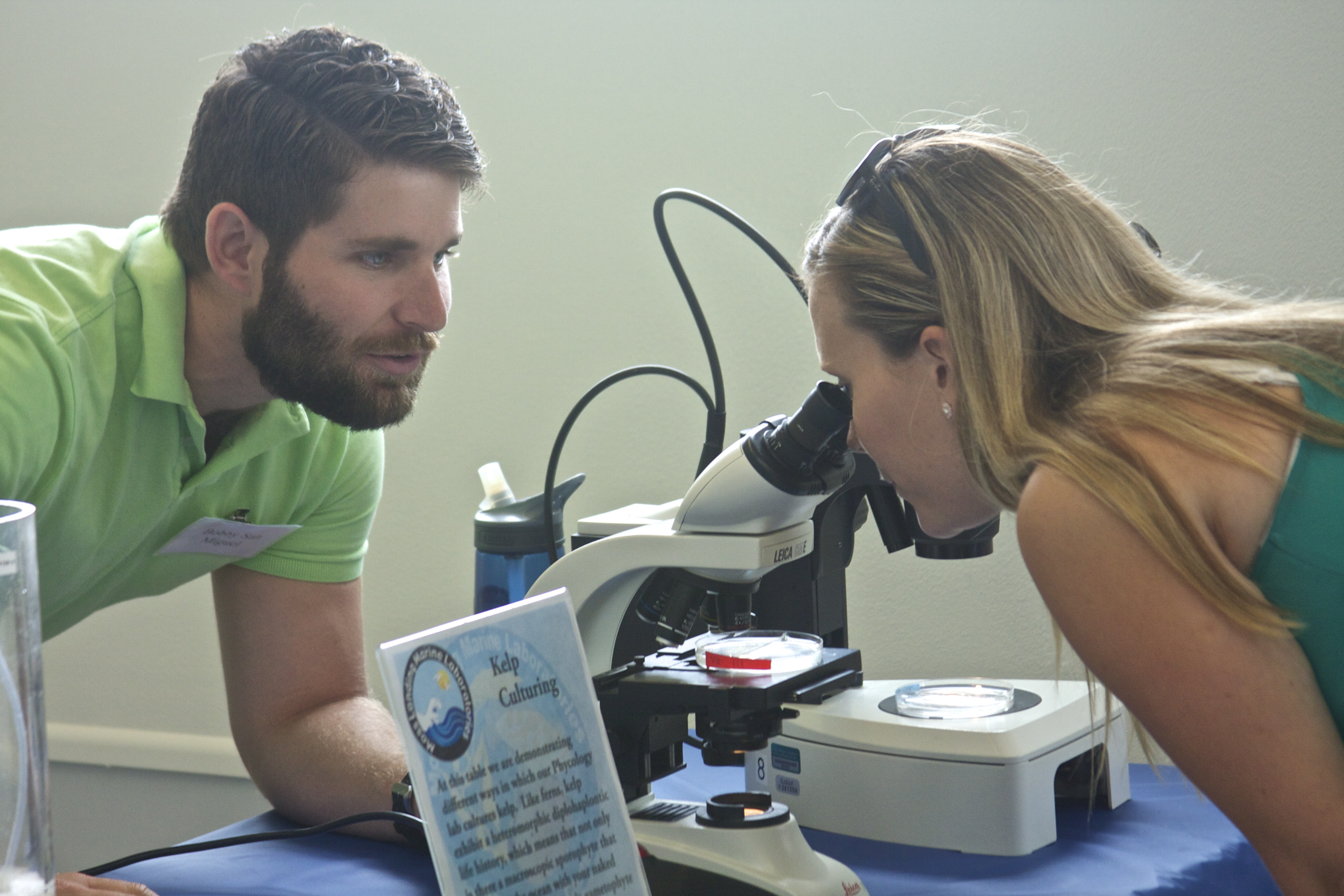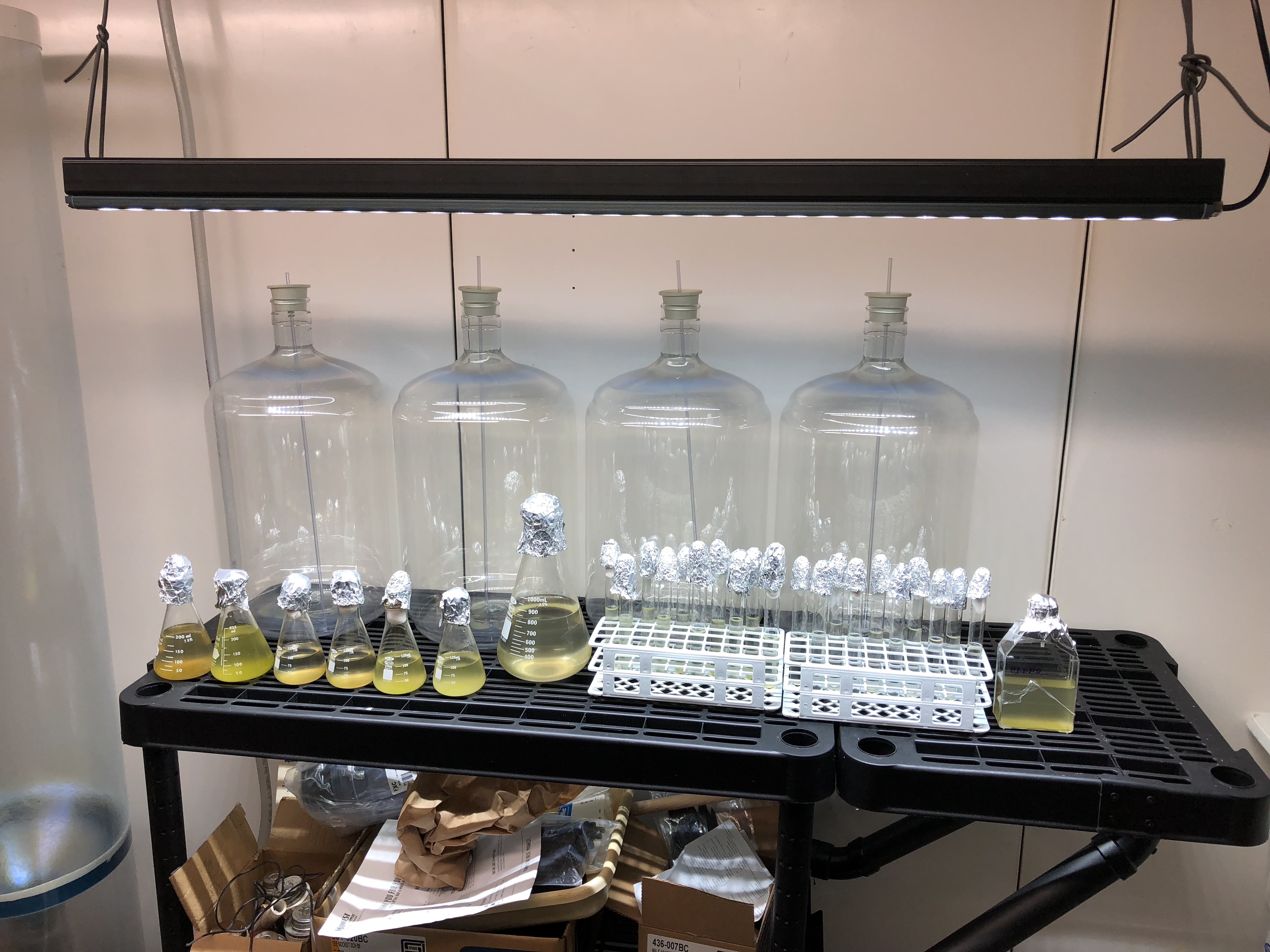
CURRENT RESEARCH
RESEARCH OBJECTIVES
-
Sponsor an annual colloquium on research needs of the aquaculture industry.
-
Generate support for infrastructure to create state-of-the-art facilities.
-
Advance research designed to answer relevant questions regarding sustainable practices.
OUR FOCUS
Partnership with industries aimed at solving real problems in aquaculture science and production, and addressing broader societal issues (e.g., biofuels/energy independence, food security, and restoration of natural populations).
CURRENT PROJECTS
Solving Impediments to the Co-Culture of Seaweeds and Shellfish
Mike Graham and Scott Hamilton received $132,000 of funding from NOAA Sea Grant to investigate how integrated multi-trophic aquaculture of seaweeds and shellfish (oysters and abalone) may potentially mitigate the negative effects of ocean acidification on shellfish growth. Changing ocean pH is having negative impacts on oyster growers in the Pacific Northwest, and potentially on any shellfish growers, especially at the hatchery/nursery scale. Seaweeds, however, thrive off increased carbon dioxide and can buffer ocean acidification. We have added 24 new 300-gallon tanks to create a replicated design to assess the effectiveness of various species of seaweed in mitigating different acidification scenarios on the growth and health of shellfish. We are partnering with Hog Island Oysters and Monterey Abalone Company in this project. We are measuring shellfish growth with and without the seaweed buffer and seaweed growth with and without the added shellfish nutrients. In addition to providing much needed experimental scientific information on the effects of ocean acidification on shellfish hatcheries/nurseries, this project may demonstrate the utility of land-based integrates seaweed-abalone farms for expansion of the shellfish industry in California. Monitor the aquarium oxygen levels here.
Click the images below to see real-time Aquarium Room Oxygen Levels & Temperature (Left) and the Intake Seawater Quality Conditions (Right):
Forecasting the Effects of Ocean Acidification and Hypoxia on Reproduction of West Coast Groundfish
Scott Hamilton has received $298,000 of funding from NSF, NOAA Saltonstall-Kennedy, and California Sea Grant to assess the impacts of ocean acidification (OA) and hypoxia on temperate fishes. Current work involves studying how these climate change stressors can (1) affect reproduction and embryo development in multiple species of groundfish and (2) impact the behavior and physiology of juvenile fishes. We have added a new trailer with computer controls to allow precise control of pH and dissolved oxygen in 24 new tanks to assess the impacts of changing ocean chemistry on commercially important fishes. Water quality of these tanks are continuously monitored and published data can be seen here.
Native Olympia Oyster Culturing at MLML Supplements Elkhorn Slough Population
With funding from Anthropocene Institute and a collaboration with Kerstin Wasson (Elkhorn Slough National Estuarine Research Reserve) we have started a hatchery for the native Olympia Oyster (Ostrea lurida) with the intent of restocking impacted populations of this oyster in Elkhorn Slough and possibly later in San Francisco Bay. This project also requires the culture of microalgae as a food source for the developing oysters. We also monitor the water quality where these oysters are kept and published data can be seen here.
Sea Feeds: Identification and Culture of Californian Marine Macroalgae Capable of Reducing Greenhouse Gas Production from Ruminant Livestock
Luke Gardner, Scott Hamilton, and Mike Graham received $ 206,000 of funding from UC Sea Grant to identify and culture California marine macroalgae capable of reducing greenhouse gas production from ruminant livestock. Approximately 29% of methane produced in California comes from ruminants, of which dairy cows are the most prominent producer of methane. Including seaweeds as 2% of the ruminants diet can greatly reduce methane production. We will collect approximately 30 seaweed species off the California coastline for in vitro ruminate analysis measuring digestion and gas production. Seaweeds will be tested for culture potential in aquaculture systems. Then we will test the most promising candidate species using in vivo trials in collaboration with the USDA.
